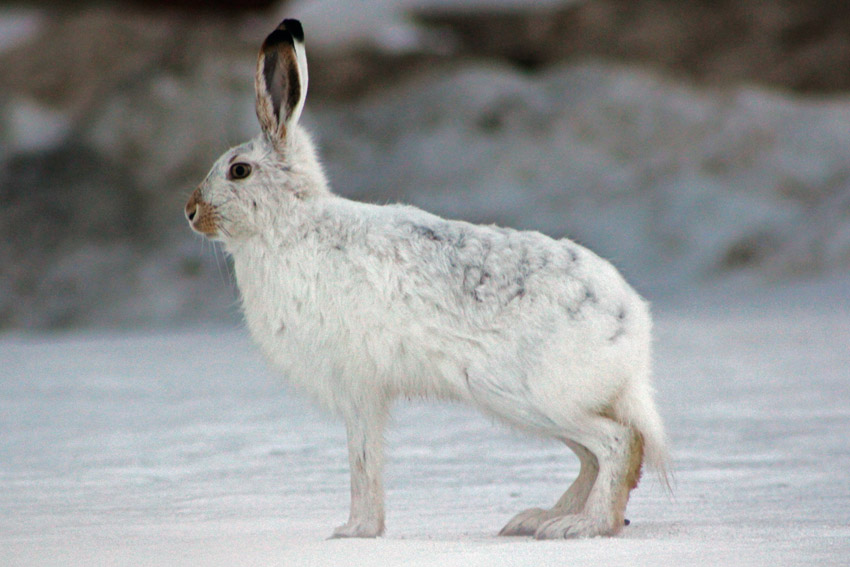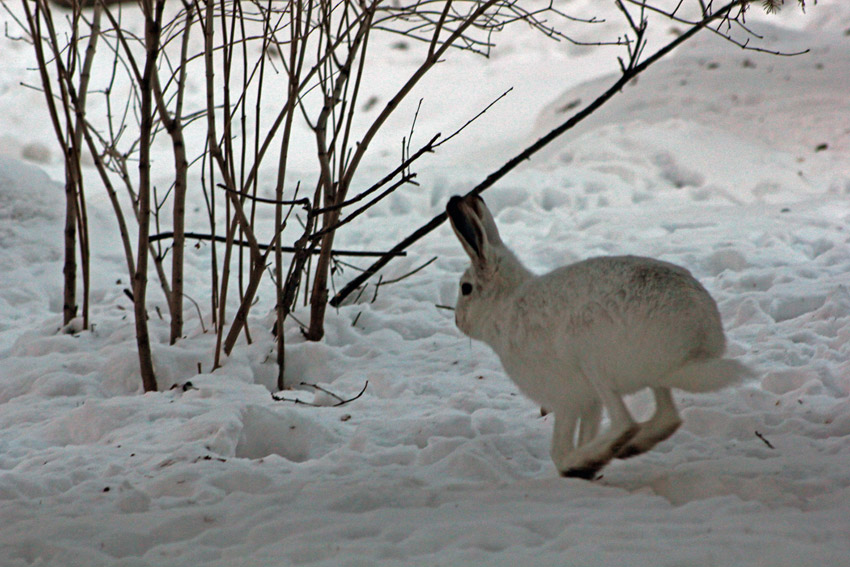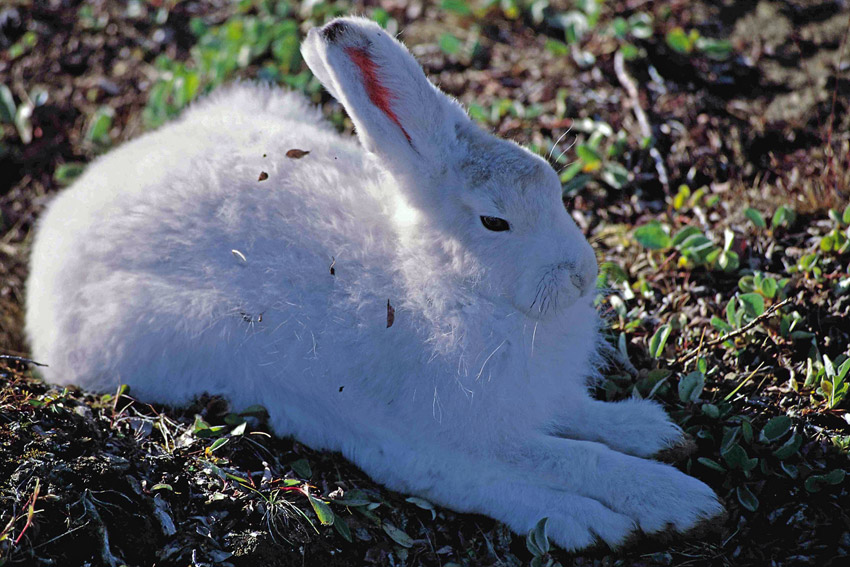Arctic Hares are found in northern Canada down to Newfoundland in the east and around the coasts of Greenland. Another similar species, the Mountain Hare, Lepus timidus is found in Arctic Europe and Asia, both are animals of the high Arctic, it is possible that both are actually the same species.
Arctic Hare - Facts and Adaptations
Lepus arcticus
arctic hare facts Basics
Average Weight: 2.5 to 5.5kg (6-12 lbs),
up to 7kg (15.5lb), females tend to be larger than males.
Average Length: 48 to 68 cm long (19-28
inches), a short tail of 3-8cm (1-3 inches)
Breeding Season: April to mid-September,
usually one or two litters per year with 5 to 6 leverets
(baby hares) at a time. A depression in the ground or under
rocks for shelter is used as a nest, usually lined with
moss, fur and grass. Once born the young are left by the
female who only returns to feed them with milk every 18
hours or so, they are fully weaned at 8-9 weeks. The young
from one year are ready to breed the following year. Arctic
hares tend to disperse during the breeding season, individuals
pair up and adopt a mating territory, males may have more
than one partner. They have a rapid ability to reproduce
and build up numbers.
Estimated world population:
- Unknown, widespread species with what are thought to be
healthy populations though little monitoring is taking place.
Populations undergo cyclic fluctuations.
Diet and Feeding: Mainly herbivorous though can
act as an opportunist predator or scavenger, they eat a
wide range of foods, mosses, lichens, buds, berries, leaves,
roots, woody plants, seaweed and bark depending on the season
and availability. During the winter, they will dig through
snow to find buried food. They have been reported to scavenge
on fish and other meat, they eat snow to get water.
Conservation status: Least Concern.
Habitat and Distribution: The Arctic
Hare lives mainly above the northern tree line in the Arctic
tundra, though some move below the tree line in winter,
they live at altitudes up to 900m. They are not found on
sea ice being herbivores dependent on land plants for food.
Predators: Arctic wolf, arctic fox,
red fox, grey wolf, lynx, snowy owl, gyrfalcon, ermine and
Canadian lynx. The smaller predators such as ermine, snowy
owl and arctic fox will usually prey on younger hares. The
arctic hare was historically important to Native Americans
who hunted them for their fur to make clothing and for food.
Such hunting still goes on, though affects only a small
amount of the population (around 5%) and probably has no
impact on the overall numbers.
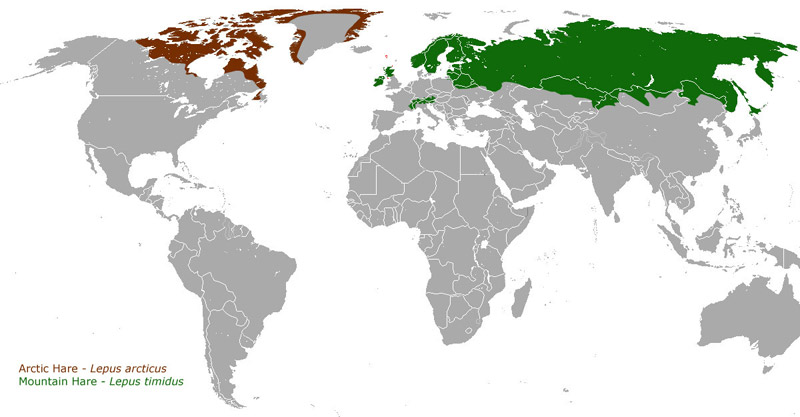
Distribution range of the
Arctic Hare -
Lepus arcticus and
Mountain Hare
- Lepus timidus
What are Arctic Hares like? how do they survive?
Arctic hares have up to 20% of their body mass as fat for insulation. this is a relatively low amount for a cold climate animal and the lack of weight that this brings enables them to reach 60kmh (40 mph) while running to escape predators. They have a number of anatomical, behavioural and physiological adaptations that allow them to survive in an extreme climate successfully.
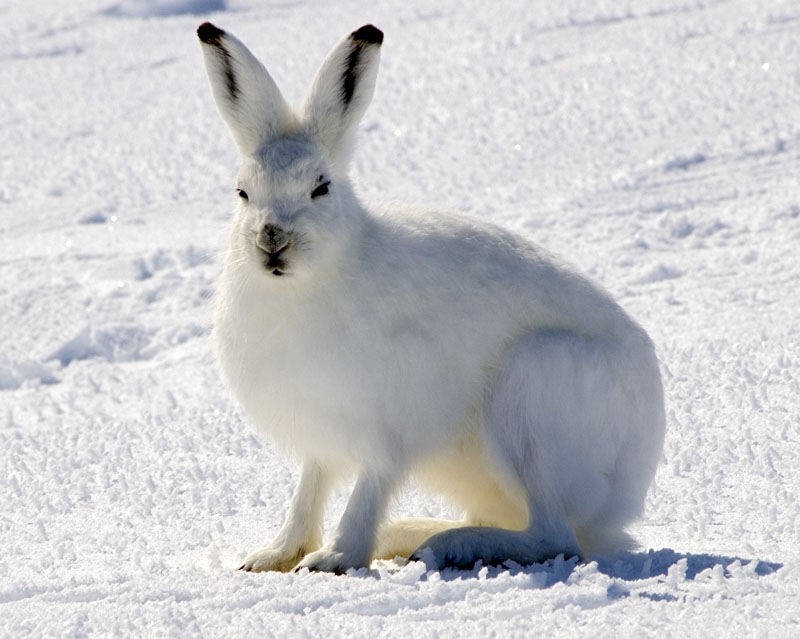
Arctic Hare in winter coat
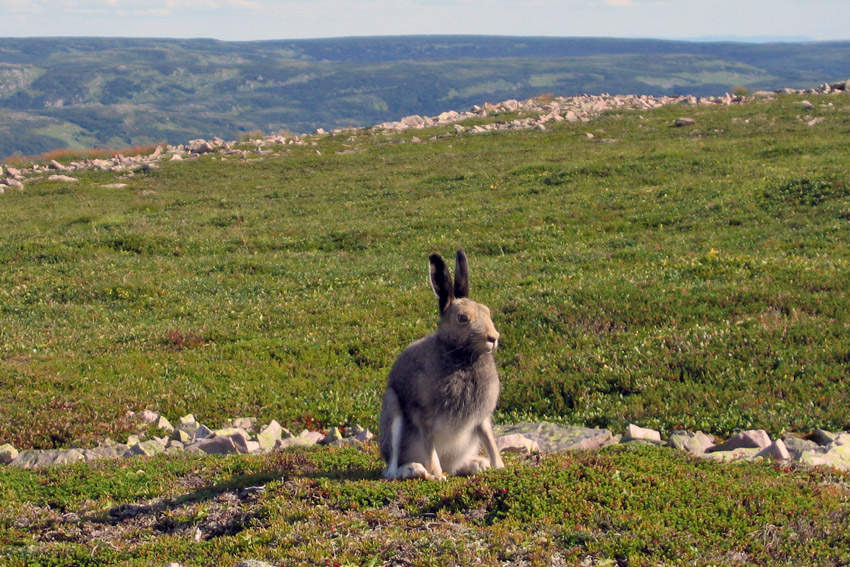
Arctic Hare in summer
coat in Newfoundland
Arctic Hare Adaptations:
- Relatively low surface area to volume ratio
(anatomical) - Like many cold climate animals,
compared to their warmer climate cousins, arctic hares have
proportionally shorter limbs, ears and a stockier build.
They have less surface area for their volume to lose heat
from.
- Thick camouflaged seasonal fur (anatomical)
- The coat of the arctic hare is always thick and highly
insulating. Those hares in the southern parts of their distribution
grow two distinctly different coats over the course of a
year, predominantly white in the winter and blue-grey in
the summer months so they can blend into the landscape more
easily all year round. Those hares that live in the more
northern parts of their range retain their white coat all
year round though their summer coat is shorter than
their winter coat.
- Paws heavily padded with fur (anatomical) - to spread their weight while walking on soft snow, to insulate them from snow and ice and also provide for grip on slippery surfaces.
- Shelter in burrows they dig into the ground
or under the snow during very cold weather (behavioral)
- A relatively quick and easy way of avoiding the worst
of the weather by tunneling beneath the snow to avoid the
biting wind and gain extra insulation from the snow. While
the temperature in the snow hole is still below freezing,
it can be much higher than outside and is of course out
of the fur-ruffling wind.
- Often live in groups in the winter months
(behavioural) - Living in groups in the coldest weather
means that arctic hares can huddle for warmth, it also helps
them to spot predators sneaking up on them and to evade
predators by confusing them as to which hare to chase so
wearing them out and making a kill less likely. This is
known as "flocking", groups may form of dozens
of individuals or up to 3,000 or more. When on the move
a flock moves and changes direction at the same time. They
disperse again in the spring when the breeding season starts.
- Very keen sense of smell (anatomical/physiological) - To help the arctic hares to find food beneath the the snow, knowing where to dig.
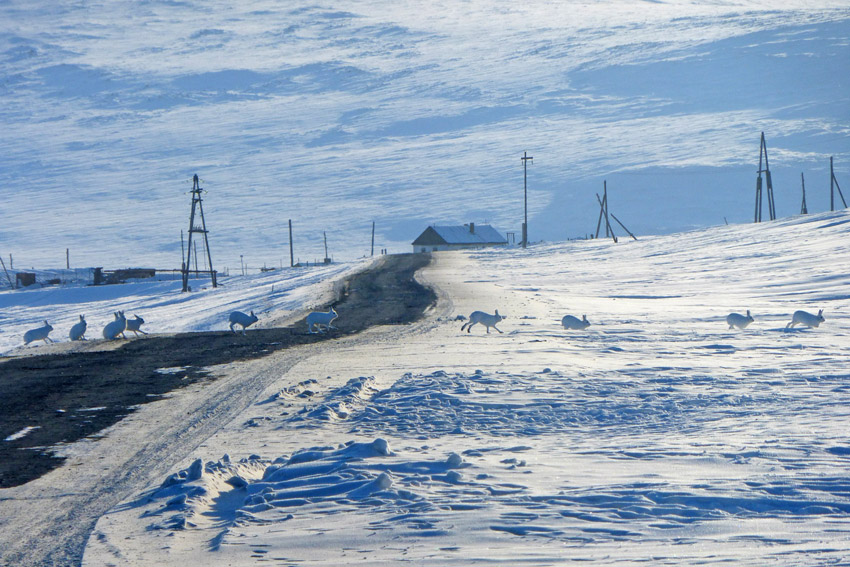
Arctic Hares flocking
in the winter
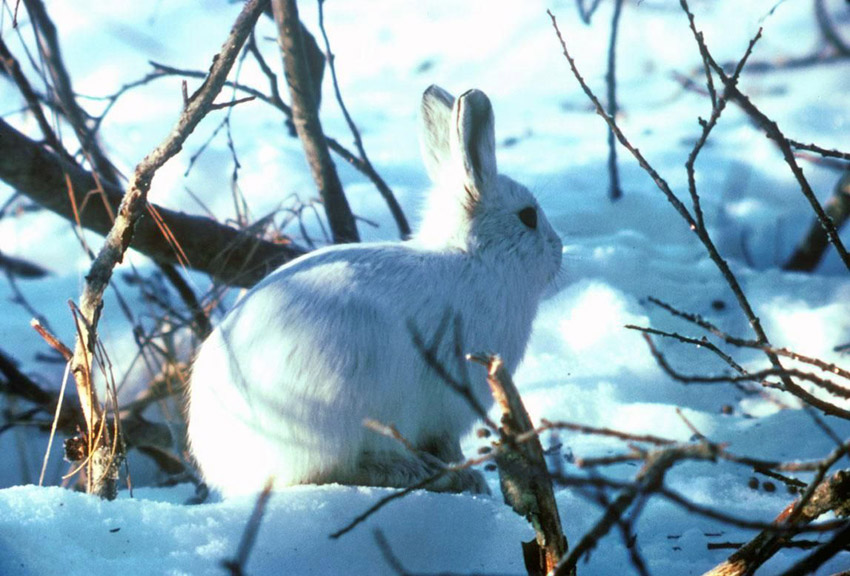
Arctic Hare in snow
and bushes
Arctic wolves vs the Arctic hare, video 2 mins 10 secs - BBC
Creative Commons Attribution 3.0 license - Top title picture and Lone winter Arctic Hare - Jeffery J. Nichols, User: Arctic gnome | Distribution map - composite from IUCN Red List of Threatened Species, spatial data | Arctic Hare in Newfoundland - Gilad.rom | Arctic Hare (white coat, lying down, grass/soil background) - Ansgar Walk
Creative Commons Attribution 4.0 license - Arctic Hares flocking, inc. top page banner - Anton Dit

